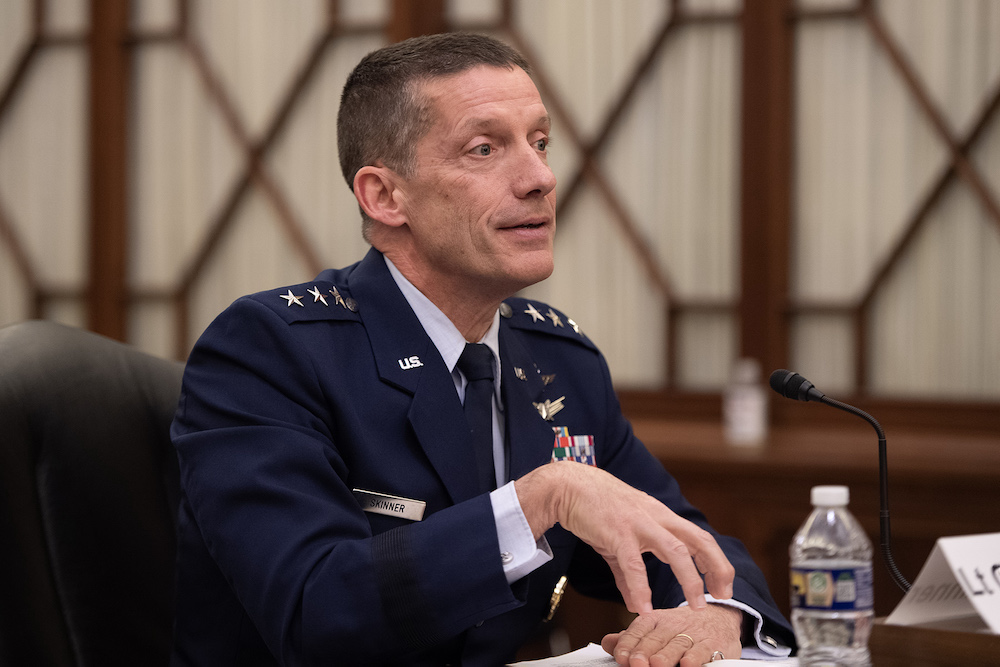DHA Director Highlights Security, Speed in Agency Priorities
The health agency is prioritizing these areas amid the many technological solutions DHA seeks.

Defense Health Agency Director Lt. Gen. Ronald Place emphasized security and speed are core to creating effective technological solutions and systems, he said at the DHA Industry Day in San Antonio Thursday.
Place underscored four priorities within the agency and explained that each of those pillars can be leveraged with technological innovation. Those priorities, he said, are to:
- Ensure that the military’s forces are always medically ready;
- Form a “ready medical force” that can be quickly deployed at military’s posts across the world to make units readily medically prepared;
- Ensure that patients are satisfied; and
- Maintain and support DHA staff so that they feel “fulfilled” and experience “joy and purpose working in the MHS.”
Place stressed that it is difficult for DHA to deploy the medical devices, acquisition and financing systems, and other solutions normally on the health information technology market in the face of the Defense Department’s security requirements.
“In the Department of Defense … we require significant elements of defense — cyber defense — within our systems,” Place said. “But across the global health care environment in the United States, that’s not necessarily the case. … If you aren’t putting cyber defenses in those systems, they’re likely something that we can’t utilize.”
With cybersecurity and speed as the top two elements that Place wants to see in technology DHA deploys, Place spoke about how he wants to leverage those secure and fast technologies to address DHA’s four priorities.
Place said DHA’s electronic health records are central to his the first priority — to ensure that military forces are medically ready at all times. Getting those records to an optimal state, he added, will require a combination of leveraging new technologies, getting innovative with preexisting technologies and realigning resources DHA already has.
“The way that we document things and the way that we harvest data from the documents, I believe, is an element of how we can better ensure that medical ready force,” Place said, adding that whether the records are collected on DHA’s disparate legacy systems or its new MHS Genesis EHR, DHA’s applications need to fit into those EHRs, and DHA needs to be able to effectively collect data from them.
The second and third priorities — to create a medical ready force and patient satisfaction — also require scope, scale and speed, Place said. Although DHA serves 9.5 million patients at facilities across the world, Place said that DHA has local elements in those locations, but they aren’t all integrated into DHA’s current direct care system. Integrating those disparate centers into DHA’s system, then, is a significant effort DHA wants to address.
Connectivity, continuity of records and speed also contribute to DHA’s ability to provide quality care to its patients, Place added.
“It’s hard to get more combined, it’s hard to get more joined, it’s hard to get more innovative or forward-thinking,” he said. “But it’s about access to the right services at the right time. It’s about the quality of that care. It’s about the compassion associated with it. That leads to those great outcomes to have that ready medical force at all echelons.”
To provide quality patient care and to build and maintain the technology and systems that support the care, DHA needs supported personnel that feel fulfilled in its work, he said. To tackle the final priority, DHA has partnered with the American Medical Association’s Joy in Medicine program, which measures commitment to staff, how much time away from normal duties DHA asks staff to work and burnout rates.
There are a variety of ways in which DHA can continue to measure staff fulfillment. Place’s ultimate goal is to create “an organizational construct that has a sense of fulfillment with our staff.”
Addressing the technological challenges behind these four priorities require a web of different solutions and strategies. Throughout the answers to the problems DHA encounters, cybersecurity and speed are the top two elements that solutions should pedestal.
“Security is the No. 1 priority, second is speed,” he said, adding that keeping those pillars in place and making secure, smart investments are key to supporting the military’s servicemembers and making their sacrifices worthwhile.
This is a carousel with manually rotating slides. Use Next and Previous buttons to navigate or jump to a slide with the slide dots
-

DOD Has a New Cyber Resiliency Assessment Program
Defense officials tout the continuous assessment feature and scalability of the new program amid increased cyber threats.
5m read -

Transitioning Systems for Modern Agency Missions
IT modernization is a constant process necessary for improving customer service, mission delivery and collaboration.
40m watch -

Cyber Resilience and Recovery Amid Evolving Cyber Threats
Data durability is a key aspect of NIST’s cybersecurity framework for public and private organizations.
21m listen -

How Tech Enables Environmental Justice at EPA
The agency wants to eliminate bias and establish new tech standards to reduce greenhouse gas emissions.
39m listen




